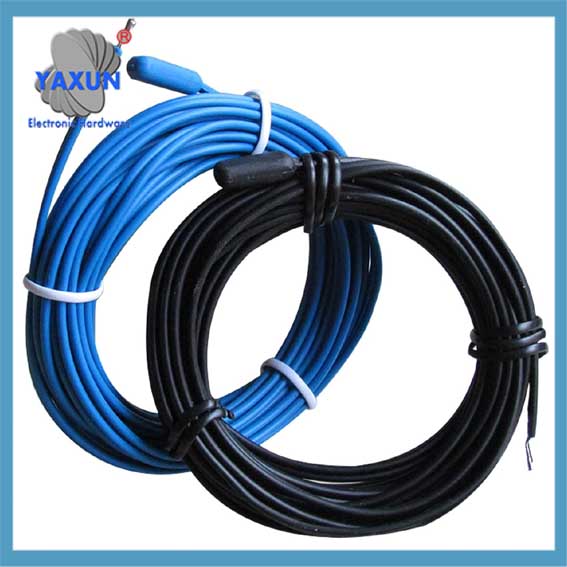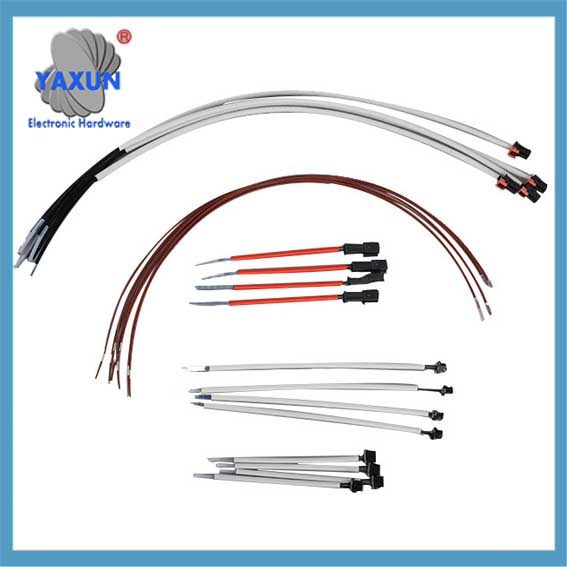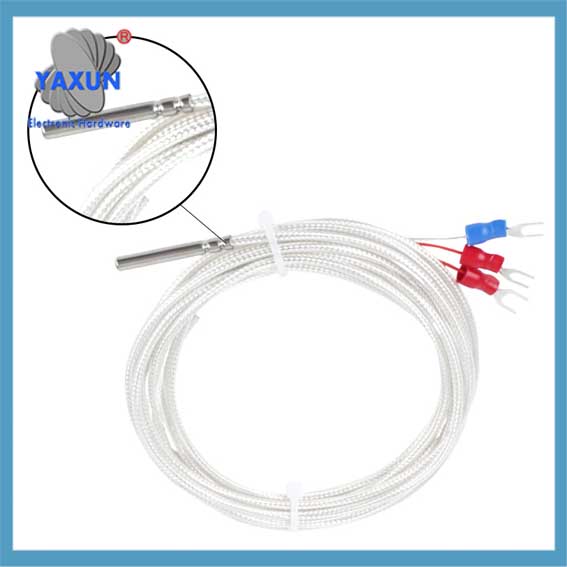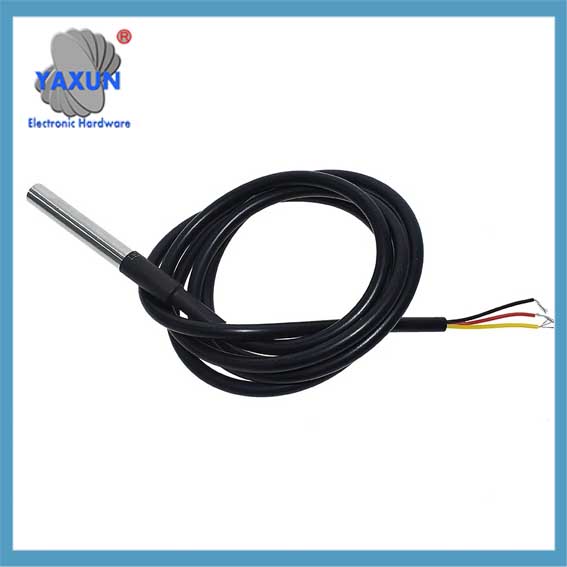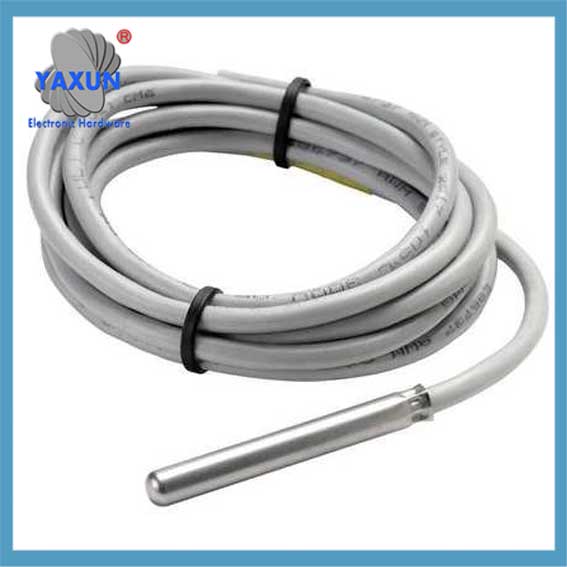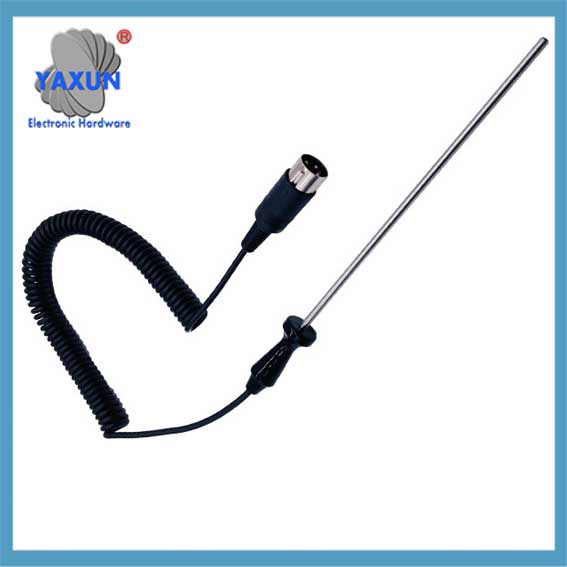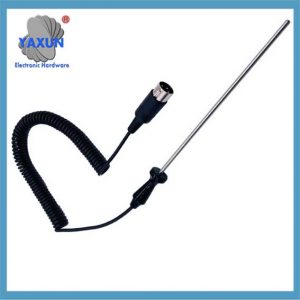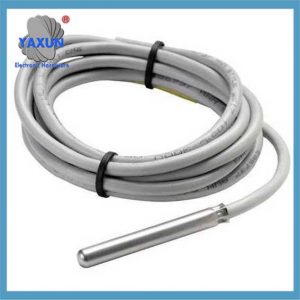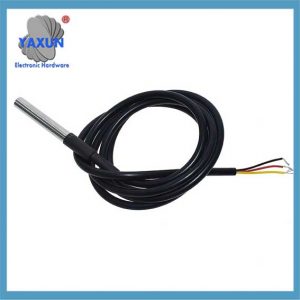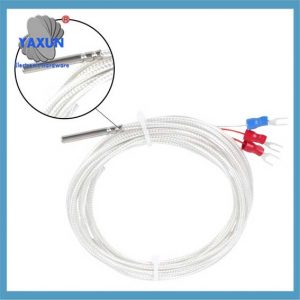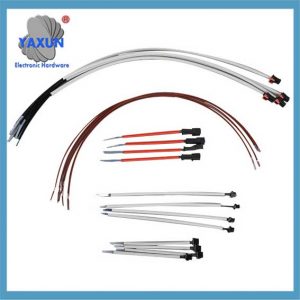Kategori produk
Tag produk
NTC, PTC, PT100, Ds18b20 untuk sensor probe suhu
Probe Thermocouple: Ia menggunakan kesan termoelektrik untuk mengukur suhu, dan mempunyai ciri -ciri pelbagai pengukuran dan kelajuan tindak balas yang pantas.
Siasatan rintangan terma: Menggunakan harta yang rintangan bahan logam atau semikonduktor berubah dengan suhu untuk mengukur suhu, dan mempunyai ciri -ciri ketepatan pengukuran yang tinggi dan kestabilan yang baik.
Probe semikonduktor: menggunakan harta yang kekonduksian bahan semikonduktor berubah dengan suhu untuk mengukur suhu, dan mempunyai ciri -ciri saiz kecil, berat ringan dan penggunaan kuasa rendah.
NTC, PTC, PT100, Probe suhu DS18b20 dan sensor suhu memainkan peranan penting dalam bidang pengukuran suhu. Berikut adalah pengenalan terperinci kepada sensor probe suhu:
Terdapat banyak jenis sensor suhu, termasuk:
Thermocouples
Sensor ini diperbuat daripada dua logam yang berbeza yang menyambung di dua mata untuk membentuk persimpangan. Mereka boleh dipercayai, tepat, dan boleh beroperasi dalam pelbagai suhu.
Pengesan suhu rintangan (RTS)
Sensor ini berdasarkan perubahan rintangan logam apabila suhu berubah.
Thermistors
Sensor ini menggunakan ciri -ciri suhu perintang semikonduktor, yang mengubah rintangan apabila suhu berubah. Thermistors sensitif dan mempunyai ketepatan yang tinggi berbanding dengan kos mereka.
Pekali suhu negatif (NTC) Thermistors
Sensor ini sensitif dan boleh bertindak balas terhadap perubahan suhu yang sangat kecil. Mereka mempunyai julat suhu -50 ° C ke 250 ° C..
Pengesan suhu rintangan
Sensor ini mempunyai pekali suhu positif (PTC) dan menawarkan pengukuran suhu yang tepat. Walau bagaimanapun, Mereka mempunyai kepekaan yang lemah.
1. Definisi dan Prinsip Kerja
Temperature Probe:
Definisi: Probe suhu adalah peranti yang digunakan khusus untuk mengukur suhu, dan komponen terasnya adalah elemen sensitif suhu.
Prinsip kerja: Siasatan suhu menggunakan elemen sensitif (seperti termokopel, Resistor terma, Semikonduktor, dll.) Untuk menukar perubahan suhu menjadi isyarat elektrik untuk pemprosesan atau paparan litar berikutnya.
Temperature Sensor:
Definisi: Sensor suhu adalah konsep yang lebih luas yang merangkumi probe suhu dan litar pemprosesan isyarat yang disambungkan kepadanya.
Prinsip kerja: Sensor suhu bukan sahaja merangkumi elemen sensitif, tetapi juga mempunyai litar pemprosesan isyarat yang dapat menyelesaikan pengambilalihan, pemprosesan dan output isyarat suhu, biasanya dalam bentuk isyarat digital atau analog.
2. Jenis dan ciri -ciri
Temperature Probe Type:
Probe Thermocouple: Ia menggunakan kesan termoelektrik untuk mengukur suhu, dan mempunyai ciri -ciri pelbagai pengukuran dan kelajuan tindak balas yang pantas.
Siasatan rintangan terma: Menggunakan harta yang rintangan bahan logam atau semikonduktor berubah dengan suhu untuk mengukur suhu, dan mempunyai ciri -ciri ketepatan pengukuran yang tinggi dan kestabilan yang baik.
Probe semikonduktor: menggunakan harta yang kekonduksian bahan semikonduktor berubah dengan suhu untuk mengukur suhu, dan mempunyai ciri -ciri saiz kecil, berat ringan dan penggunaan kuasa rendah.
Temperature Sensor Type:
Sensor suhu analog: Output isyarat analog, yang perlu ditukar menjadi isyarat digital oleh penukar analog-ke-digital untuk pemprosesan berikutnya.
Sensor suhu digital: secara langsung mengeluarkan isyarat digital, mempunyai kemampuan anti-interference yang kuat, ketepatan yang tinggi, dan mudah disatukan ke dalam sistem kawalan.
Sensor suhu pintar: mempunyai diagnosis diri, penentukuran diri, komunikasi dan fungsi lain, dan dapat merealisasikan pemantauan dan kawalan jauh.
3. Pemilihan dan aplikasi
Selection Factors:
Persekitaran permohonan: Pertimbangkan sama ada persekitaran yang diukur mempunyai syarat khas seperti kekerasan, suhu tinggi, tekanan tinggi, dll., untuk memilih bahan dan tahap perlindungan yang sesuai.
Julat pengukuran: Pilih sensor yang sesuai mengikut julat suhu yang akan diukur untuk memastikan sensor dapat mengukur dengan tepat dalam julat yang diperlukan.
Keperluan ketepatan: Mengikut keperluan ketepatan permohonan untuk pengukuran suhu, pilih sensor dengan ketepatan yang sepadan.
Belanjawan kos: Di bawah premis memastikan prestasi, Pertimbangkan faktor kos dan pilih sensor kos efektif.
Application Areas :
Automasi Perindustrian: digunakan untuk memantau perubahan suhu dalam peralatan perindustrian, mesin dan proses pengeluaran untuk memastikan operasi peralatan dan kualiti produk biasa.
Industri perubatan: digunakan dalam peralatan perubatan, instrumen pemantauan suhu dan peralatan penyimpanan ubat untuk memantau suhu pesakit, keadaan suhu dan penyimpanan ubat ambien.
Industri automotif: digunakan dalam motor kenderaan elektrik, kapasitor, Penukar DC, sistem pengecasan, serta enjin kereta, kotak gear, Sistem penghawa dingin dan sistem ekzos untuk memantau dan mengawal suhu pelbagai cecair dan gas.
Industri pertanian dan pemprosesan makanan: digunakan di rumah hijau pertanian, Penyimpanan sejuk, peralatan pemprosesan makanan dan kenderaan pengangkutan untuk memantau dan mengawal suhu produk pertanian dan makanan.
Bidang lain: seperti industri penghawa dingin dan penyejukan, industri ketenteraan dan aeroangkasa, Industri Internet Perkara, dll. juga digunakan secara meluas.
Iv. Penggunaan dan penyelenggaraan
Stallation: Pasang sensor dengan betul mengikut arahan pemasangan untuk memastikan hubungan yang baik antara sensor dan objek yang akan diukur dan elakkan kesilapan pengukuran yang disebabkan oleh pemasangan yang tidak betul.
Wiring: Sambungkan garis isyarat dengan betul dan garis kuasa sensor untuk memastikan kestabilan dan ketepatan penghantaran isyarat.
Calibration: Kalibrasi sensor secara berkala untuk memastikan ketepatan pengukurannya memenuhi syarat permohonan. Proses penentukuran biasanya melibatkan meletakkan sensor dalam persekitaran suhu yang diketahui, Membandingkan perbezaan antara nilai outputnya dan nilai standard, dan membuat penyesuaian yang diperlukan.
Maintenation: Bersihkan dan jaga sensor dengan kerap untuk mengelakkan habuk, kotoran, dll. yang mempengaruhi prestasi pengukuran sensor. Pada masa yang sama, Perhatikan untuk memeriksa sama ada sambungan kabel longgar atau rosak, dan ganti bahagian yang rosak dalam masa.
Ringkasnya, Sensor probe suhu mempunyai pelbagai aplikasi dan kedudukan penting dalam bidang pengukuran suhu. Semasa memilih dan menggunakannya, Adalah perlu untuk membuat pertimbangan yang komprehensif berdasarkan senario dan keperluan aplikasi tertentu untuk memastikan ketepatan dan kebolehpercayaan hasil pengukuran. Sekiranya anda mempunyai soalan lain atau memerlukan bantuan lanjut, Jangan ragu untuk memberitahu saya.
Hubungi kami
Menunggu e -mel anda, Kami akan membalas anda dalam 12 Jam dengan maklumat berharga yang anda perlukan.
 English
English Afrikaans
Afrikaans العربية
العربية বাংলা
বাংলা bosanski jezik
bosanski jezik Български
Български Català
Català 粤语
粤语 中文(简体)
中文(简体) 中文(漢字)
中文(漢字) Hrvatski
Hrvatski Čeština
Čeština Nederlands
Nederlands Eesti keel
Eesti keel Suomi
Suomi Français
Français Deutsch
Deutsch Ελληνικά
Ελληνικά हिन्दी; हिंदी
हिन्दी; हिंदी Magyar
Magyar Bahasa Indonesia
Bahasa Indonesia Italiano
Italiano 日本語
日本語 한국어
한국어 Latviešu valoda
Latviešu valoda Lietuvių kalba
Lietuvių kalba македонски јазик
македонски јазик Bahasa Melayu
Bahasa Melayu Norsk
Norsk پارسی
پارسی Polski
Polski Português
Português Română
Română Русский
Русский Cрпски језик
Cрпски језик Slovenčina
Slovenčina Slovenščina
Slovenščina Español
Español Svenska
Svenska ภาษาไทย
ภาษาไทย Türkçe
Türkçe Українська
Українська اردو
اردو Tiếng Việt
Tiếng Việt
